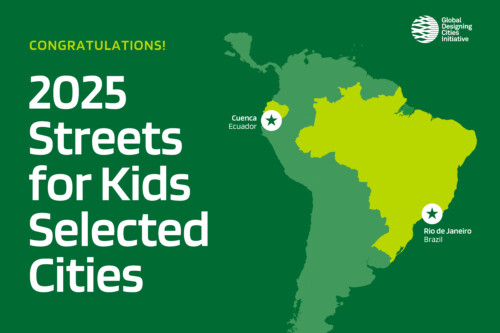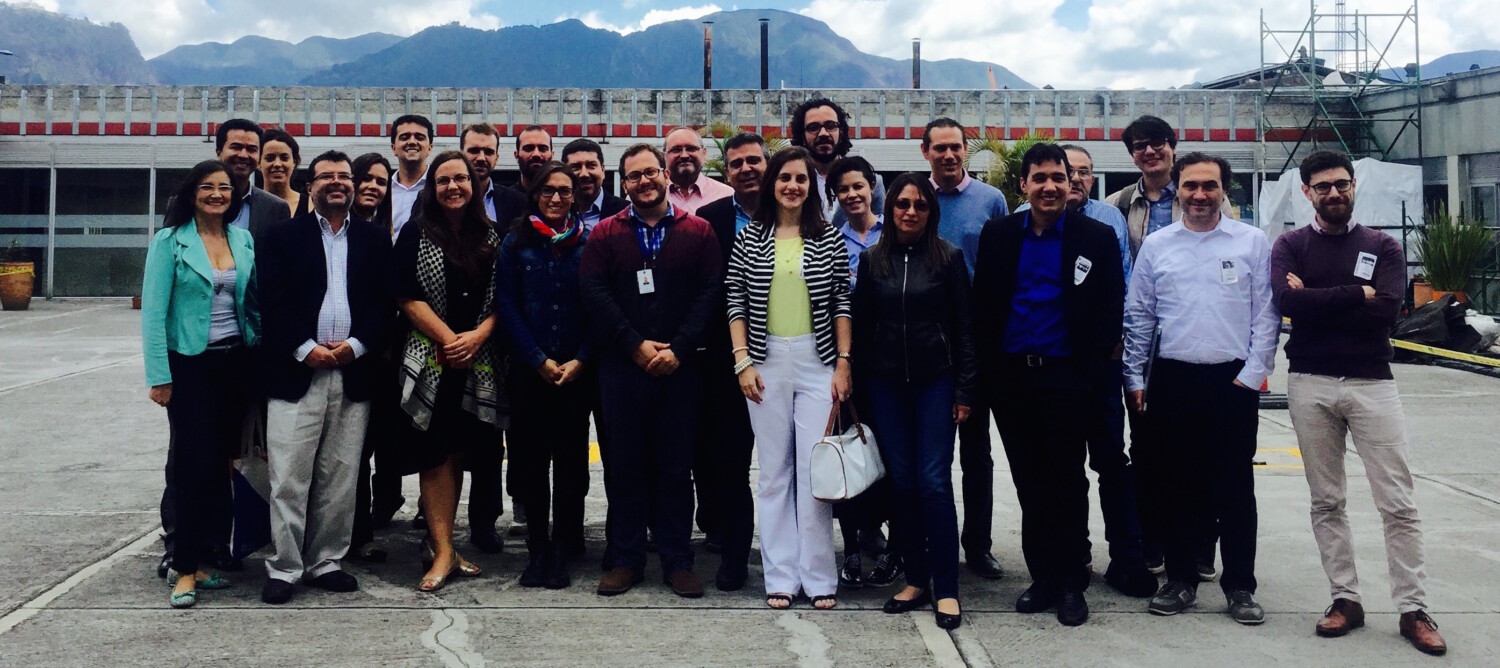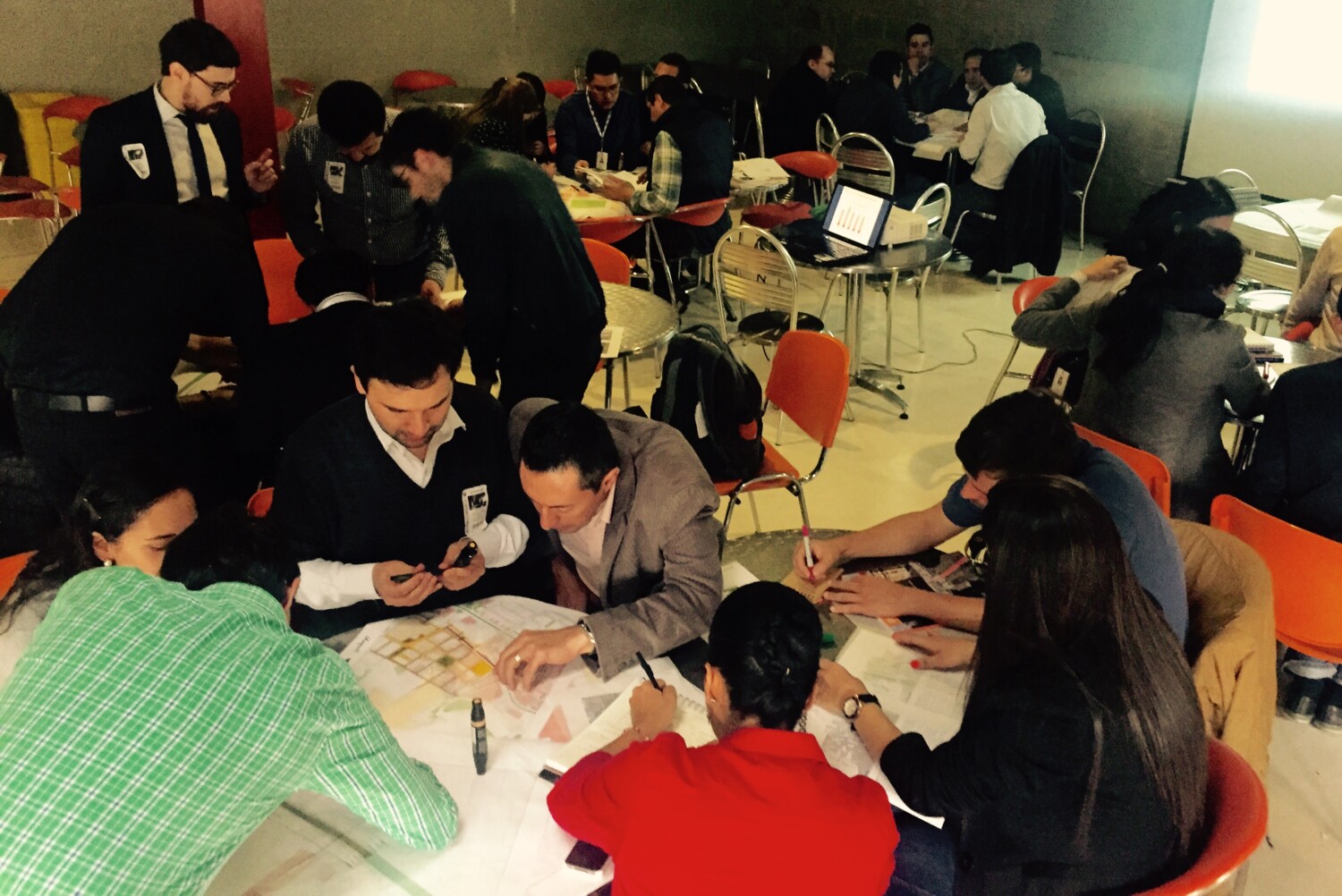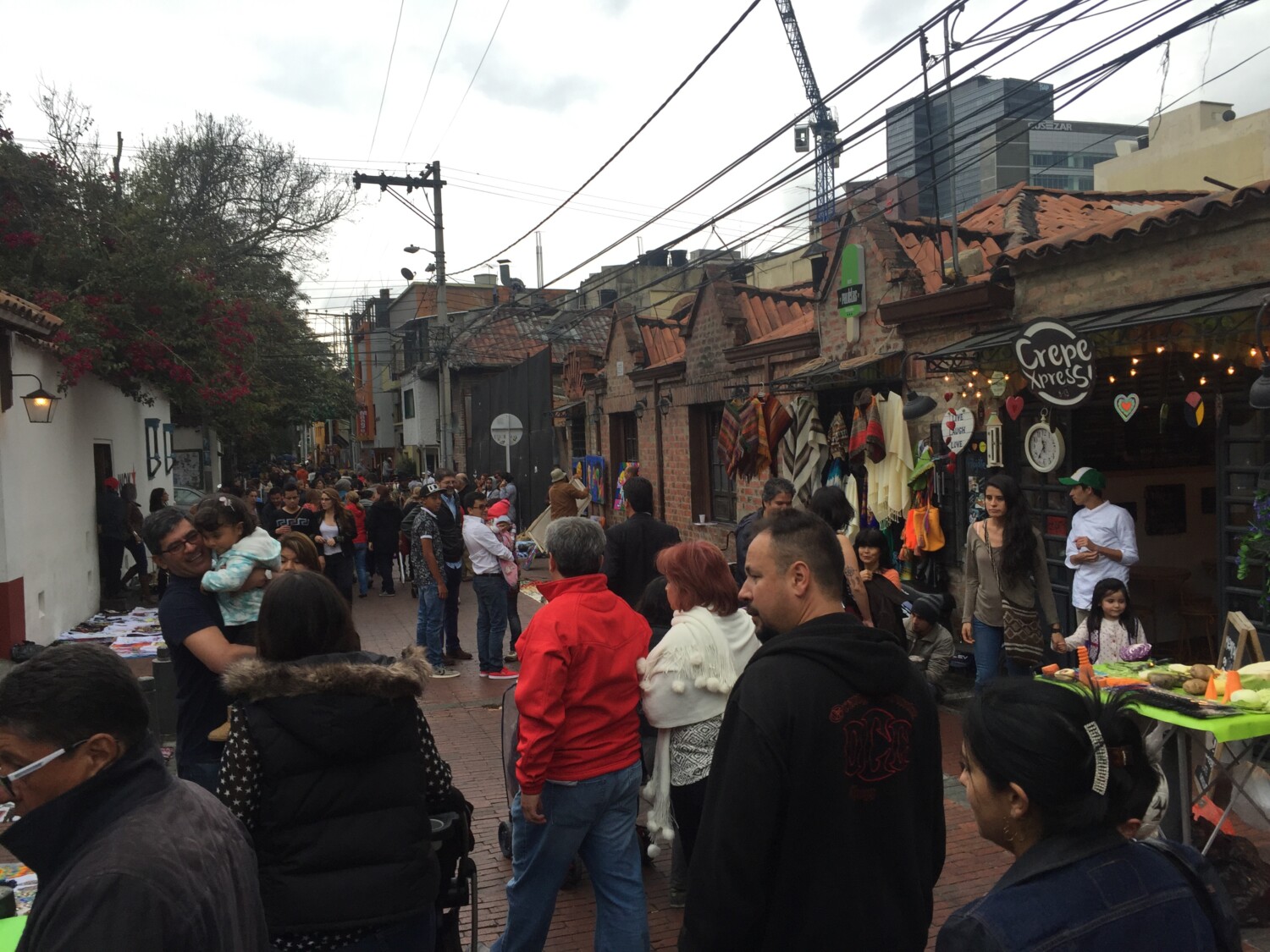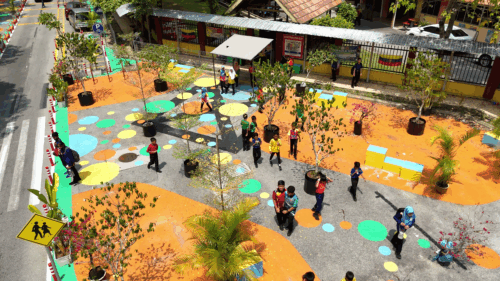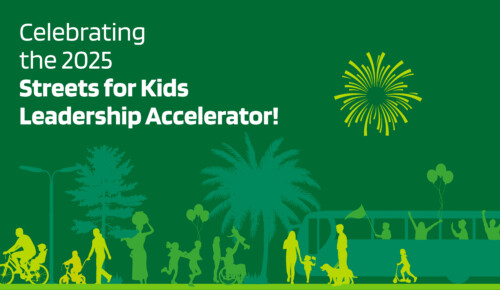We are thrilled to announce that the city of Bogotá has been selected as one of the three cities in which the Global Designing Cities Initiative will provide technical assistance this year. As part of the Bloomberg Initiative for Global Road Safety, Global Designing Cities Initiative (GDCI) will partner with the Secretariat of Mobility, the Secretariat of Planning, WRI, and iRAP to help design safer streets and safer mobility for all.
At the end of February GDCI, WRI and the Secretariat of Mobility organized a one-day workshop, with attendance from more than 50 local staff from the Secretariat of Mobility, the Secretariat of Planning and the Public Space Office, the Transportation Agency SITP/TransMilenio, and the Institute of Urban Development.
During the morning, the Global Designing Cities team, Skye Duncan and Fabrizio Prati, shared the principles and strategies from the upcoming Global Street Design Guide. In the afternoon a group of 30 planners, designers, and engineers from the 4 agencies involved were divided into 5 groups that worked together to propose contextual guidance for safer streets for two neighborhoods in Bogotá. The workshop ended with each group presenting their 5 big ideas for each neighborhood on how to design safer streets for all.
The role of GDCI will be to provide cities agencies with technical assistance in collaboration with local embedded staff, proposing improvements for two areas of the city, and reviewing city’s design guidelines and select street design proposals.
